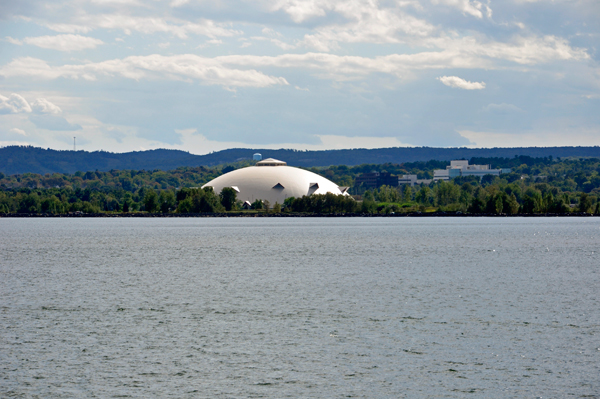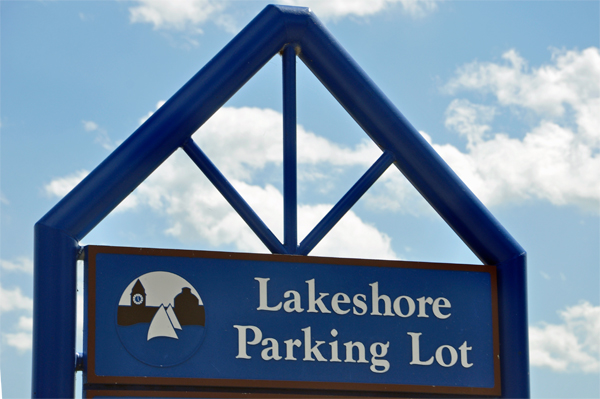 |
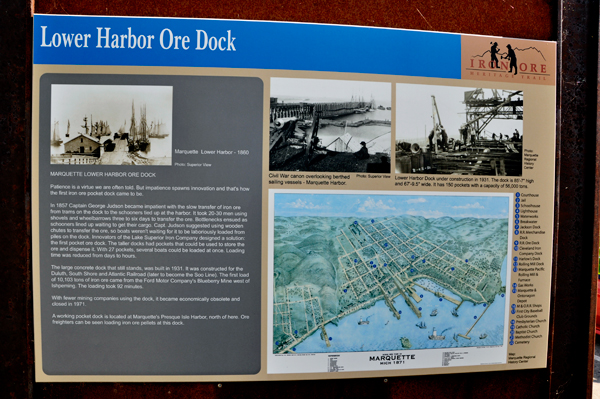 |
The Lower Harbor
Ore Dock is one of Marquette’s most iconic landmarks. A stone's throw
from downtown Marquette, this mammoth concrete and steel structure in
Lake Superior represents the city's maritime and mining past.
Constructed in the late 19th century, the Lower Harbor
Ore Dock was part of a network of docks that facilitated the transportation
of iron ore from the mines of Michigan's Upper Peninsula to steel mills
across the Great Lakes region. At its peak, Marquette was one of the
largest shipping ports for iron ore in the United States, and the ore
dock played a crucial role in this trade. |
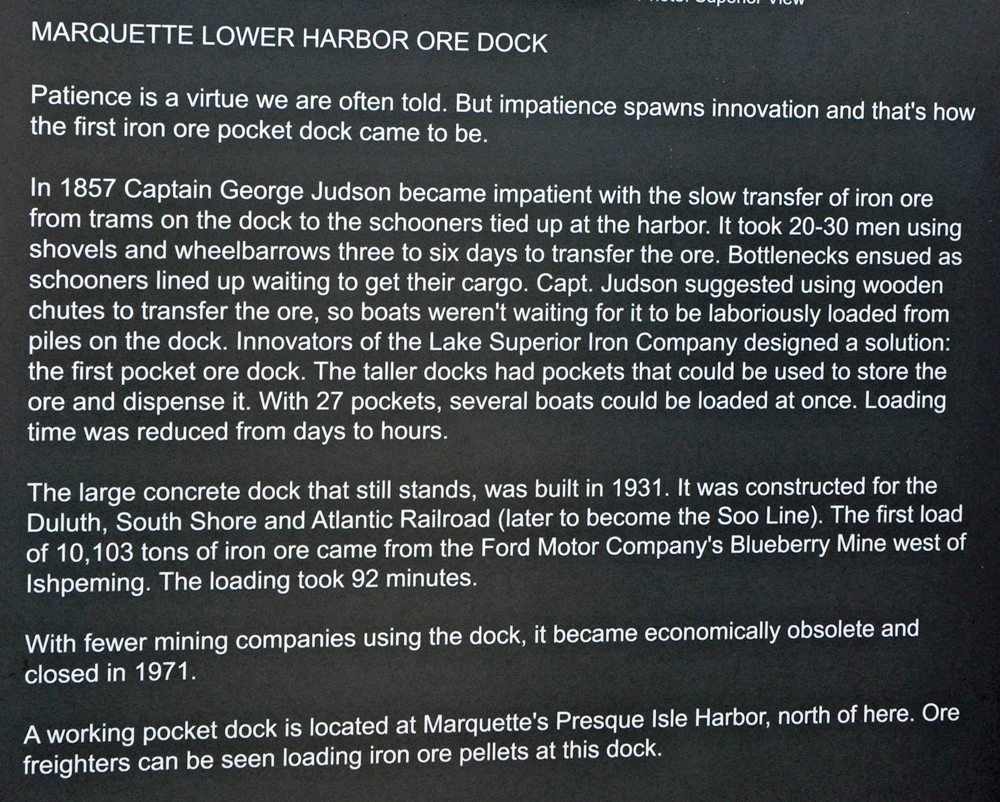 |
This steel-framed dock is 1,250 feet long
and 60 feet wide, with the top deck sitting 75 feet above the water
level. It contains 200 pockets, each of which has a capacity of 250
tons of ore, for a total storage capacity of 50,000 tons. Supporting
the dock is a foundation of 10,000 wooden piles enclosed by a 12-inch
thick timber sheet plank wall filled with sand. Each year approximately
9.5 to 10 million tons of ore are shipped from this dock. |
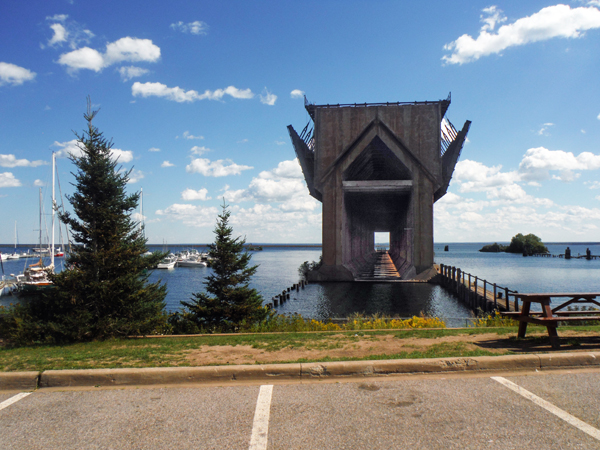 |
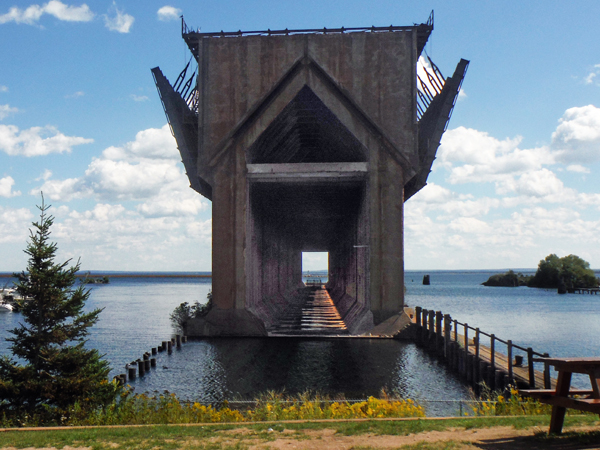 |
An ore dock
is a large structure used for loading ore (typically from railway cars
or ore jennies) onto ships which then carry the ore to steelworks or
to transshipment points. Most known ore docks were constructed near
iron mines on the upper Great Lakes and served the lower Great Lakes.
Ore docks still in existence are typically about 60 feet wide, 80 feet
high, and vary from 900 feet to 2,400 feet in length. They are commonly
constructed from wood, steel, reinforced concrete, or combinations of
these materials.
They are commonly used for loading bulk ore carriers with high mass,
low value ore, such as iron ore, in raw or taconite form.
The typical construction of an ore dock is a long high structure,
with a railway track or tracks along the top with a number of "pockets"
into which ore is unloaded from cars, typically by gravity. Each pocket
has a chute that can be lowered to discharge the ore into the hold of
a ship berthed alongside. The use of pockets and chutes allows loading
the dock asynchronously of its discharge into the freighter.
The docks storage bins or pockets typically are wider at the top than
at the bottom, and lead to movable steel chutes. These chutes project
out over the water at a slight angle from the sides of the docks. The
hinged chutes, which when lowered allow ore to drop onto ships from
the pockets, are located at twelve-foot intervals over the length of
the dock.
This spacing is not coincidental. Hatch spacing is typically 12 or
24-foot on center. |
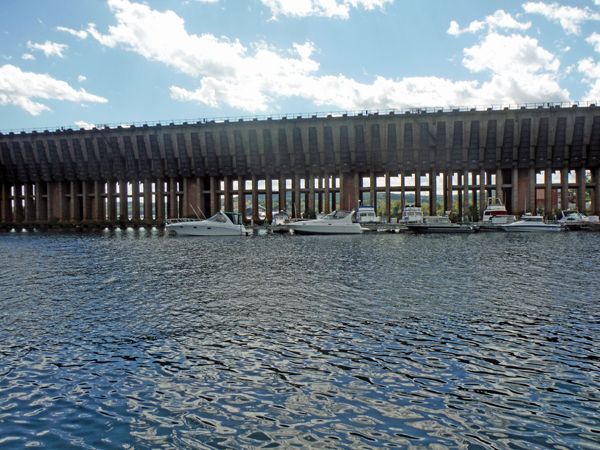 |
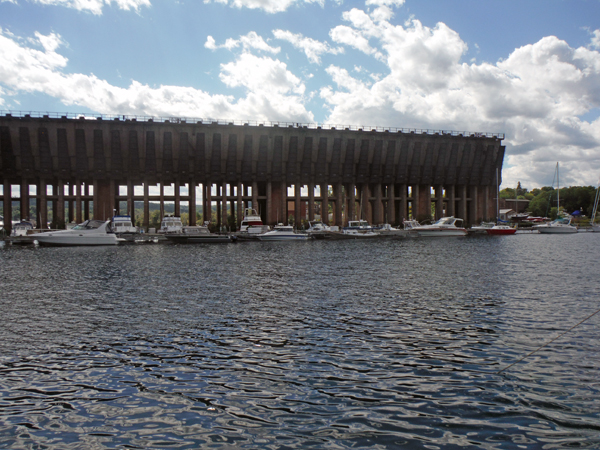 |
The pocket ore dock of the
Lake Superior and Ishpeming Railroad in Marquette represents a historically
significant engineering feat. It was the first such dock of its type
constructed on the Upper Great Lakes and is the only operating ore-loading
facility in Marquette's harbors. Iron ore ships are loaded daily. The
Duluth, South Shore and Atlantic Railroad awarded a contract on April
1, 1931 to Merrit, Chapman and Whitney, a firm from Duluth, to construct
a pocket dock in Marquette's lower harbor for an estimated $1.8 Million.
Construction began on April 16 of that year, and the project was completed
the following spring, with a price tag of $1.35 million. The trestle
and dock were owned over the years by several railroads. The dock was
officially closed on December 31, 1971 when ore shipments were diverted
to Escanaba. While in operation, it ran a ten-man crew, and in 1968,
handled over 1 million tons of ore. |
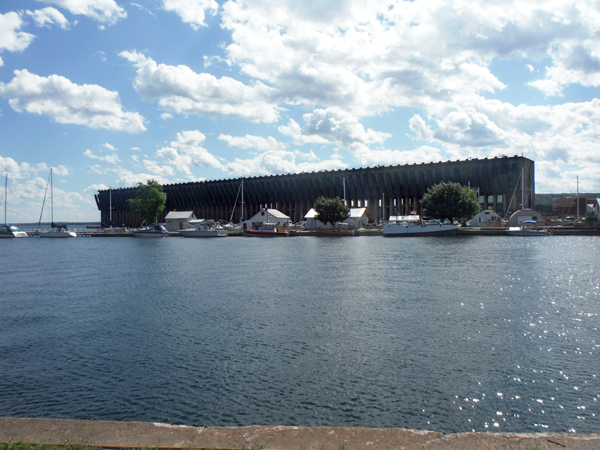 |
 |
Below: Two
two RV Gypsies liked the buoys in the water that displayed the USA Flag. |
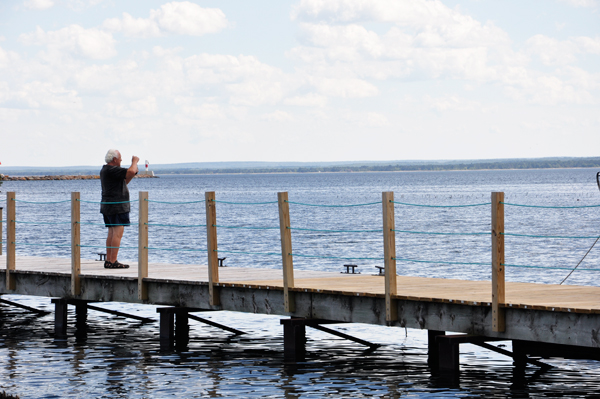 |
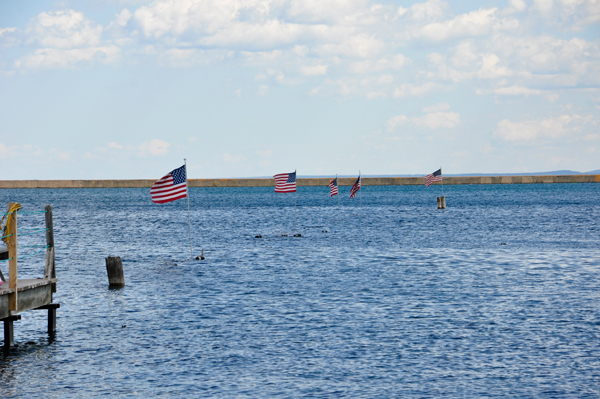 |
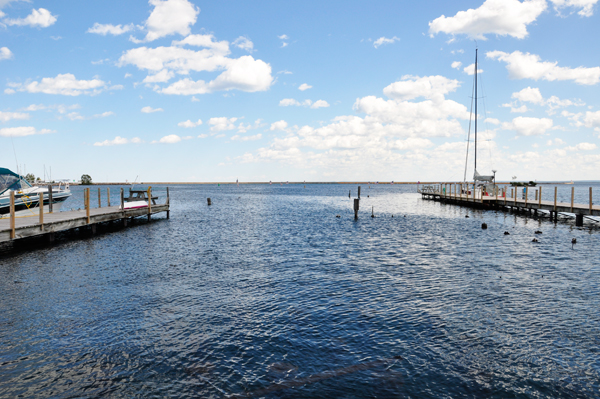 |
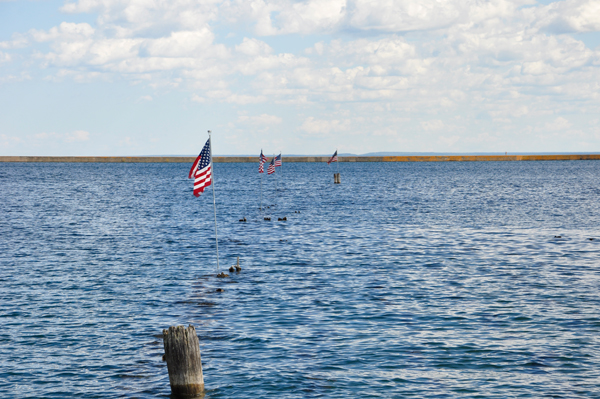 |
 |
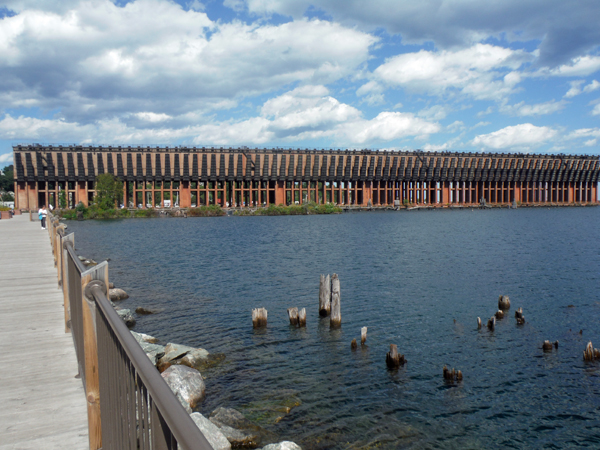 |
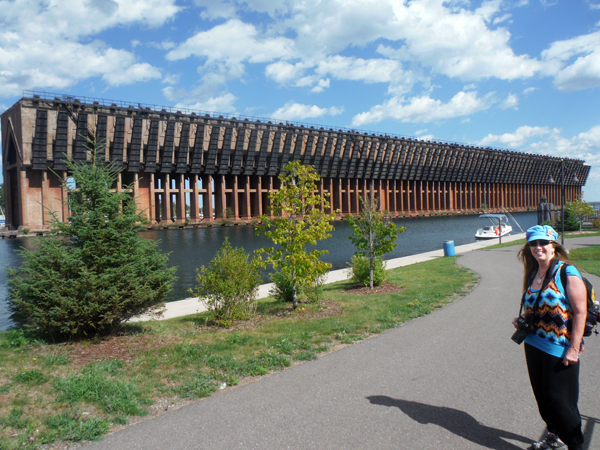 |
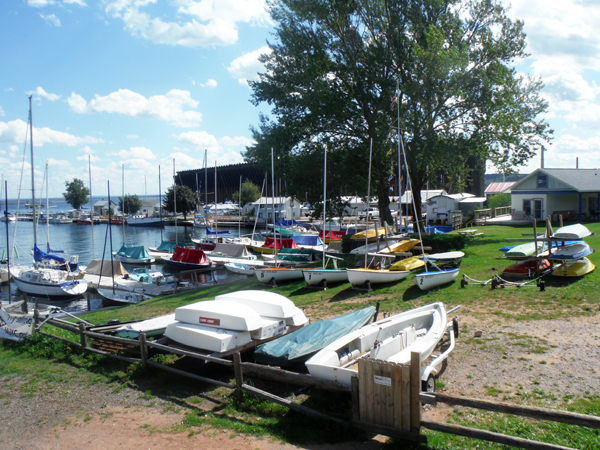 |
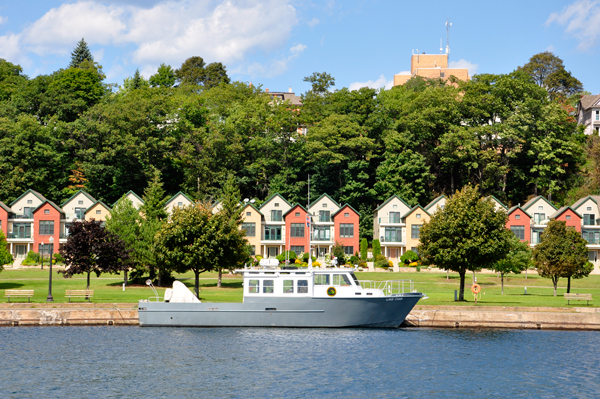 |
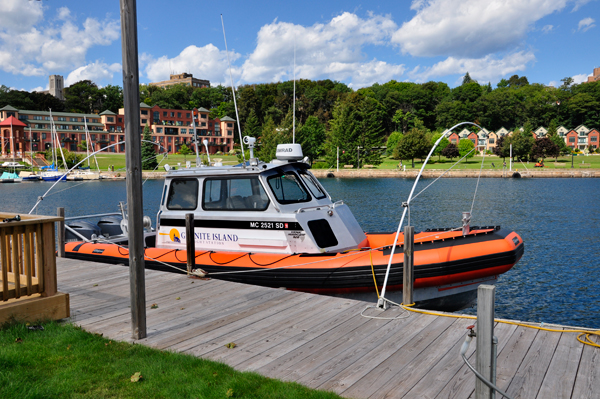 |
Below: While walking a bit
down the street in Marquette, Karen Duquette photographed several interesting
monuments. |
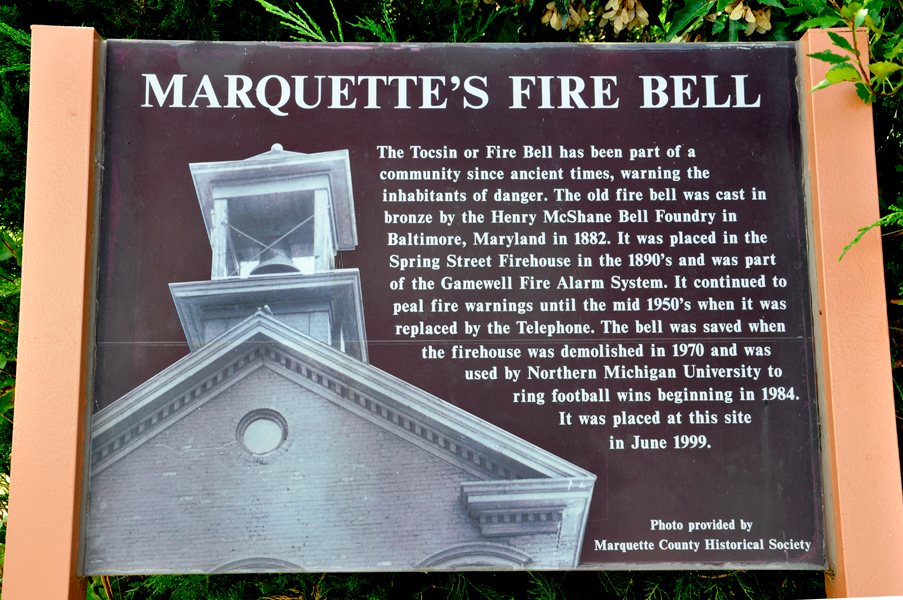 |
Below: Standing under Marquette's
Fire Bell, Karen Duquette took a picture looking straight up into the
bell itself. |
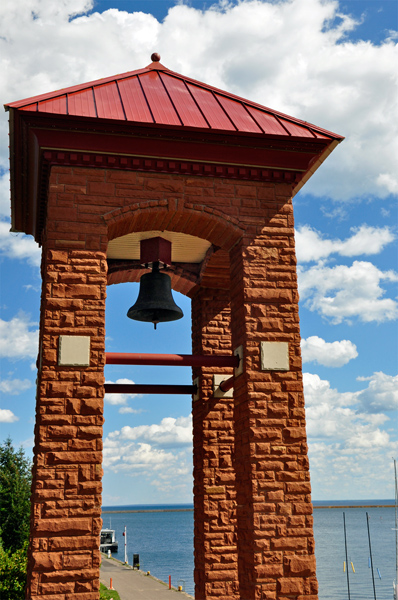 |
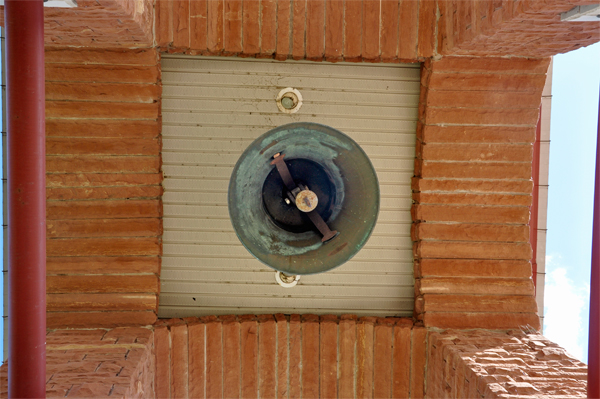 |
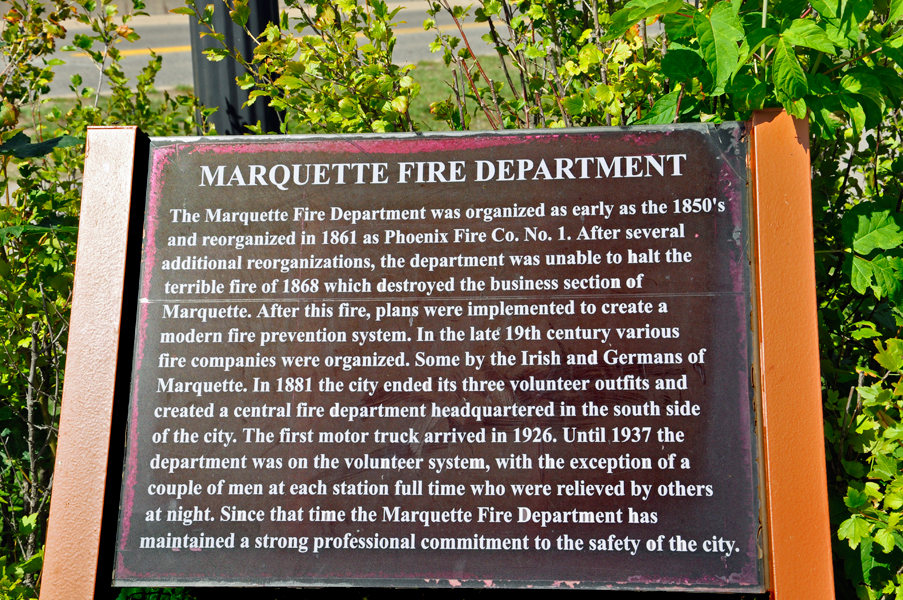 |
 |
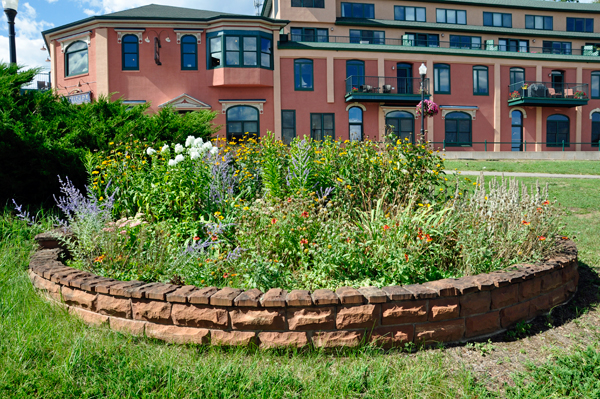 |
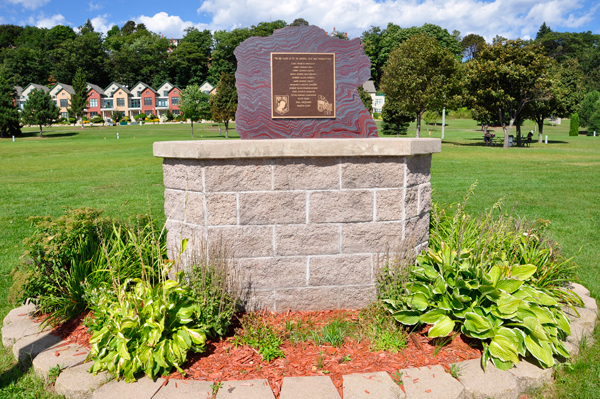 |
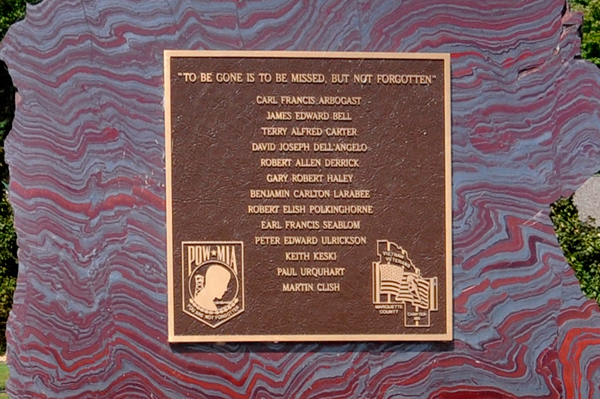 |
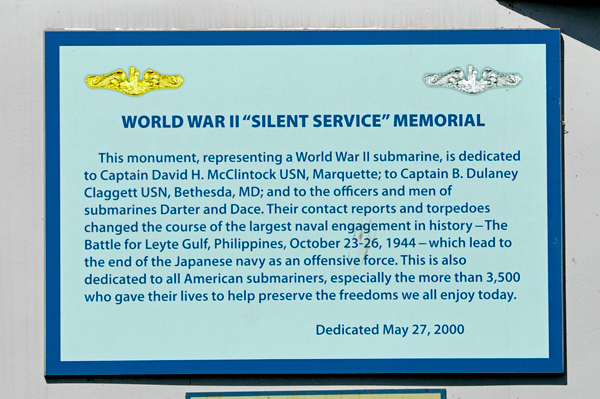 |
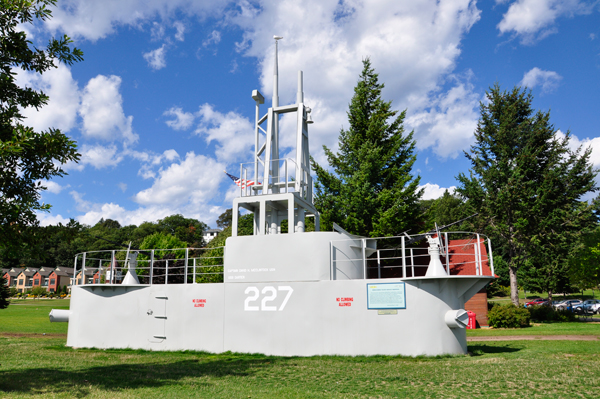 |
Below: Lee
Duquette enjoyed several different views of the ore dock. |
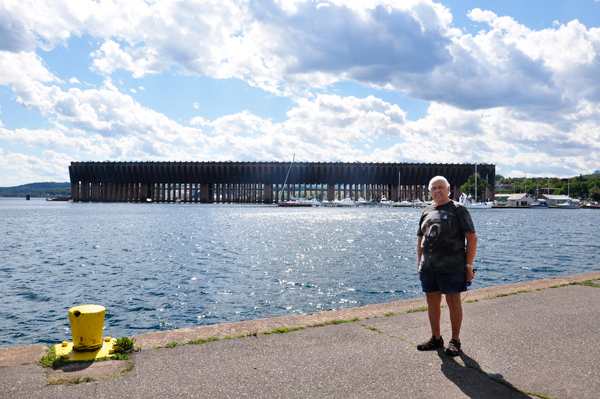 |
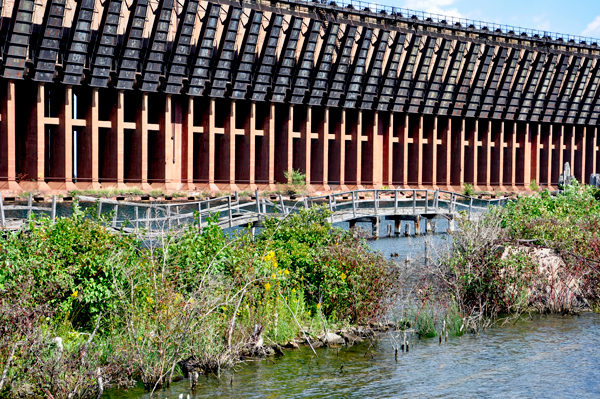 |
Below: The
two RV Gypsies stopped to have a picnic lunch and enjoyed the view. |
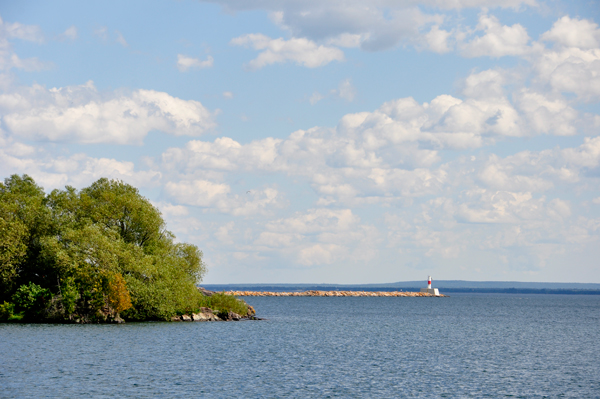 |
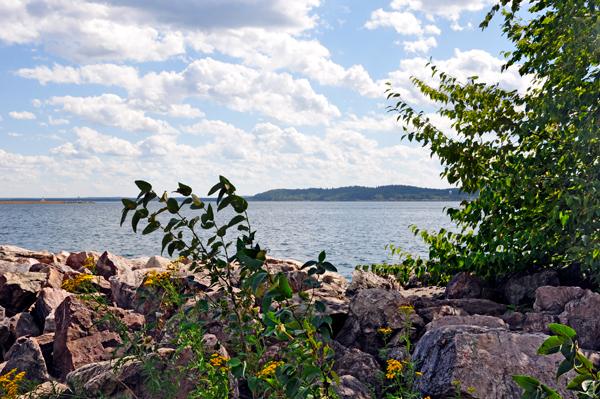 |
Below: Later, driving a bit,
Lee Duquette came across the Presque Isle Square - a small community
on the shore of Lake Huron. |
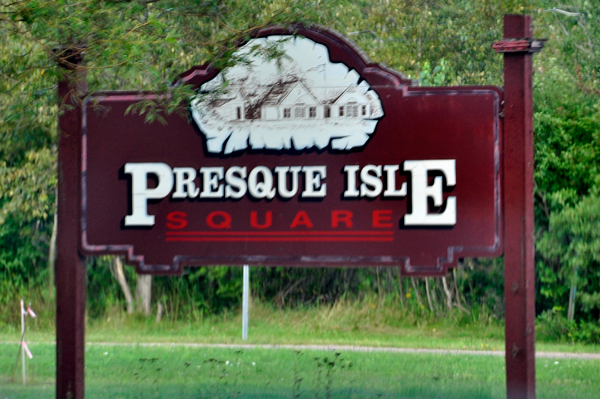 |
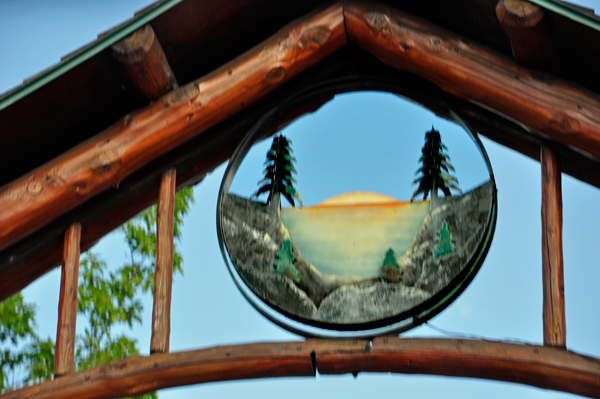 |
Presque Isle is a small unincorporated community within the township located near the shore of Lake Huron. The community and the township are named for Presque Isle (literally, "almost an island") which is French for "peninsula". A large part of the township consists of that peninsula, with Lake Huron on the east and Grand Lake on the west and narrows strips of land connecting it to the mainland at the north and south ends. The community of Presque Isle is situated near the center of this peninsula. |
Another Ore Dock |
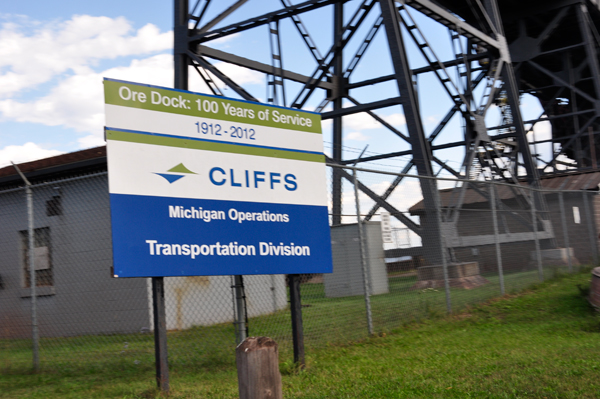 |
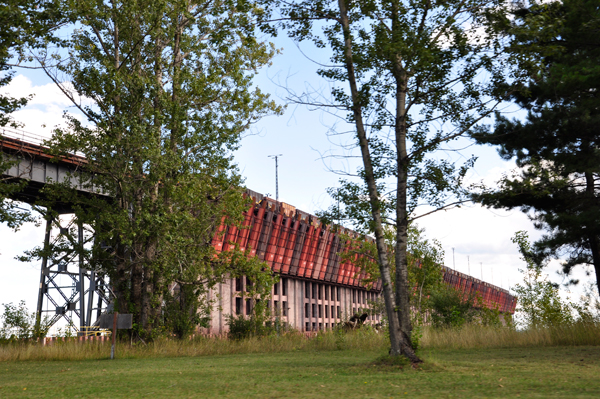 |
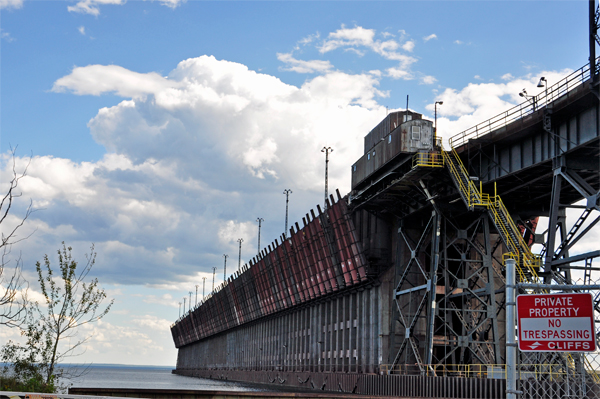 |
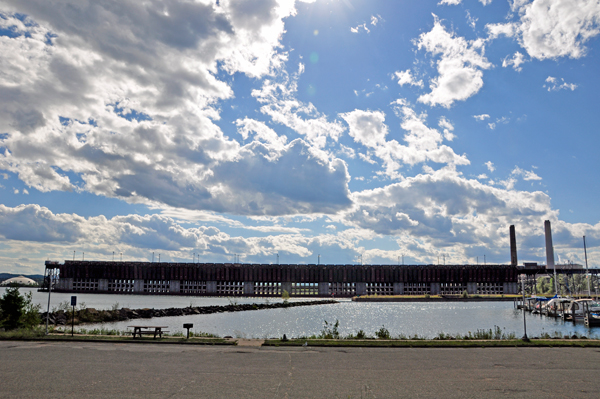 |
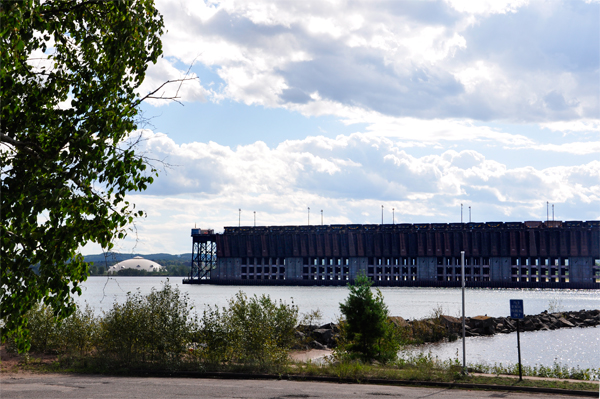 |
Below: Lee
and Karen Duquette strolled on the breakwall and enjoyed the scenery. |
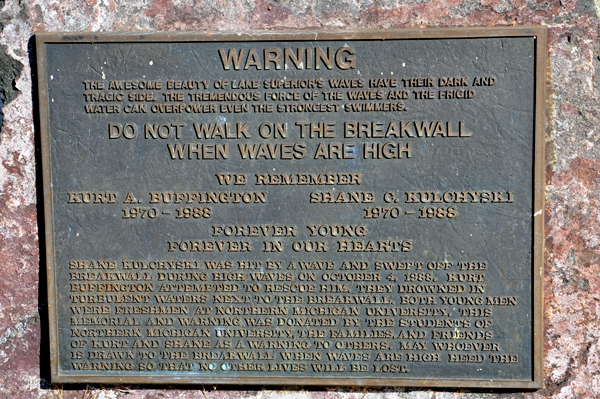 |
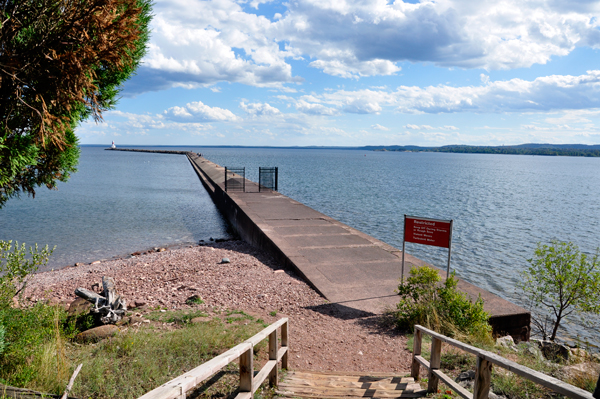 |
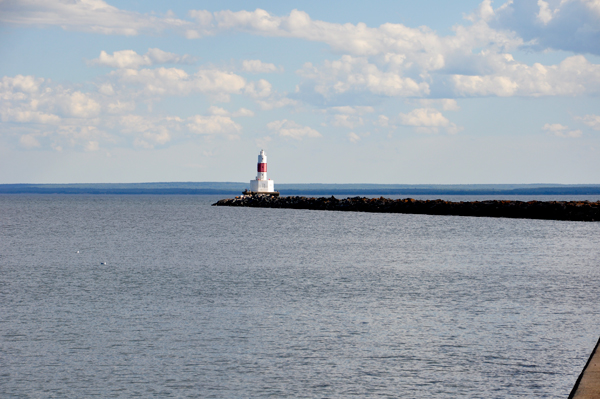 |
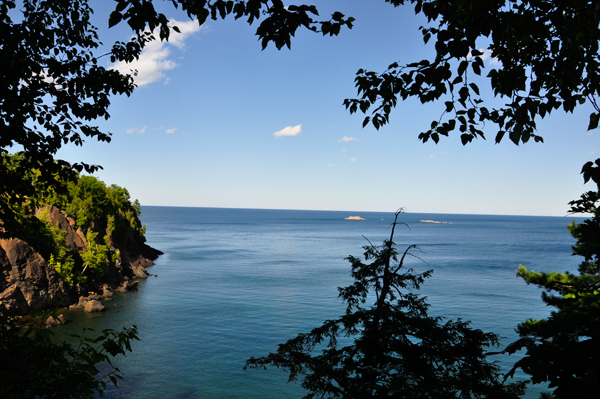 |
Below: Lee Duquette drove
on a scenic drive with several stops for photographs. Looking way down
below from a very high cliff, Karen Duquette noticed a lone swimmer,
and wondered where and how he entered the lake, and where he planed
on getting out of the lake. |
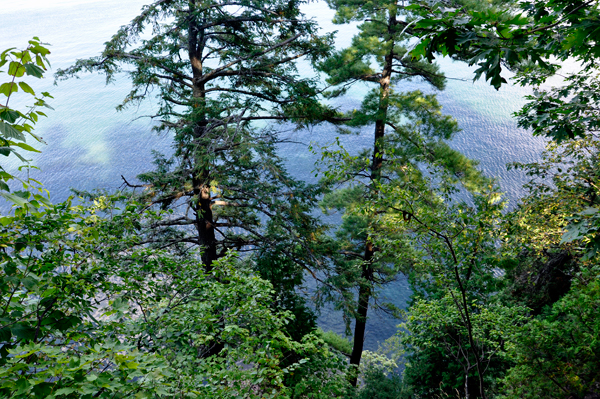 |
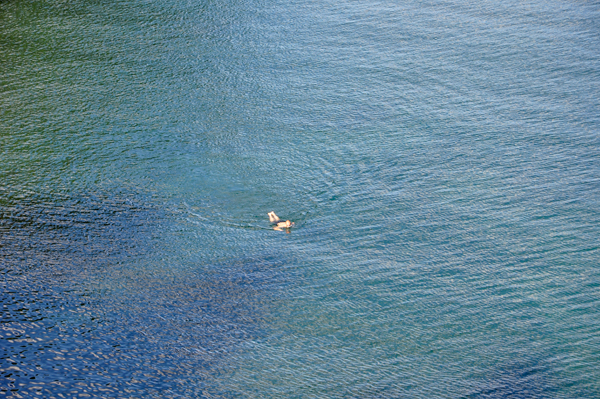 |
BELOW: The Superior Dome,
which opened as the "world’s largest wooden dome" on
September 14, 1991, is a domed stadium on the campus of Northern Michigan
University in Marquette, Michigan. It is home to the Northern Michigan
Wildcats football team, as well as a variety of campus and community
events.
The dome is 14 stories tall, has a diameter of 536 feet and covers an area of 5.1 acres. It is a geodesic dome constructed with 781Douglas Fir beams and 108.5 miles of fir decking. The dome is designed to support snow up to 60 pounds per square foot and withstand 80-mile-per-hour winds. It has a permanent seating capacity of 8,000, though the building can hold as many as 16,000 people. The 2010 edition of Guinness World Records listed it as the fifth-largest dome and the largest wooden dome in the world. |
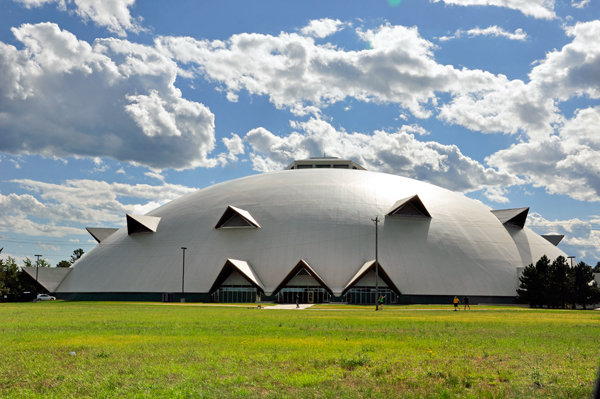 |
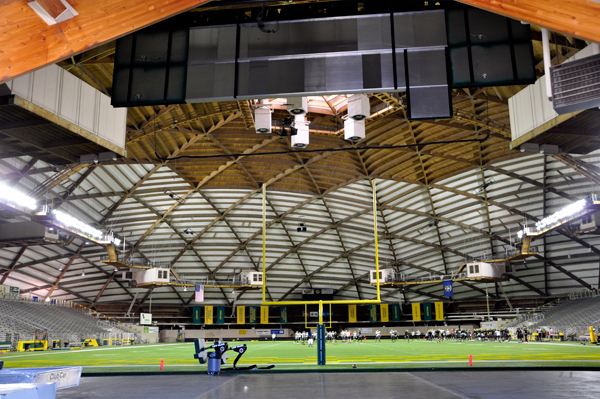 |
|
The dome features a retractable artificial turf carpet, the largest of its kind in the world. When extended, the turf can accommodate football, soccer, and field hockey. Underneath the carpet is a synthetic playing surface that features three basketball/volleyball courts, two tennis courts and a 660 foot track. The carpet is winched in and out of place on a cushion of air. Retracting the turf carpet takes 30 minutes, with full setup taking approximately two hours. President George W. Bush held a campaign rally in the stadium during the 2004 Presidential campaign. |
Below: Superior Dome view
as seen by Lee and Karen Duquette from across Lake Superior. |
|

















































